An Oneirogen is any substance, practice, or experience that promotes or enhances dream states. “Oneirogen” originates in the Greek “oneiros”, to dream, and “gen”, to create. Traditional cultures work with oneirogens to seek guidance from ancestors, to practice oneiromancy—divination through dreams—to seek healing, wisdom, and visionary experience, and to cultivate the extraordinary through one of the most common yet remarkable human experiences: the dream. The Oneironauticum, a modern, worldwide dream community, gathers on a given night to work with the same oneirogen. In addition to pursuing the ancient wisdom of dream work, we strive to explore consciousness, to experiment with subjectivity, and to play with our own intricate, marvelous minds
 | 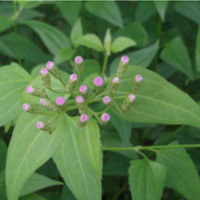 | 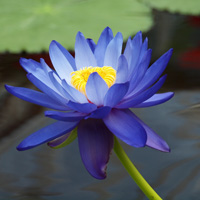 |
| Mugwort actually refers to several species of plants in the Artemisia genus. Mugwort oil contains thujone, the active ingredient in absinthe. Used as a scent, mugwort promotes powerful, visionary dreams. In Korean tradition, mugwort hot baths or mugwort steams taken late at night promote vivid dreaming. Stores that regularly stock herbs often sell dried mugwort leaves. Put the leaves—and if you like a drop or two of mugwort essential oil—into a sachet an sleep with it near you, or drop oil into your diffuser for the steam effect. Mugwort can also be drunk as a tea. Steep 1 – 2 teaspoons of dried leaf for 7 – 10 minutes. Mugwort can also be smoked. Used also to promote menstruation, this herb is not recommended for pregnant women! | Calea Zacatechichi is an herb used by the Chontal natives indigenous to the Mexican state of Oaxaca for the purposes of oneiromancy, a form of divination based on dreams. In some Mesoamerican cultures, people believe that dreams happen in realms beyond those we consciously perceive and that the contents of dreams can convey meaningful messages or prophecy. Calea is good for lucid dreaming, and also promotes dreams vivid to the senses, sight, scent, auditory, touch, and even taste. Brew calea into a very, very, very bitter tea by steeping two to three grams (a really heaping tablespoon) of dried and crushed leaves in a cup of simmering (not boiling) water for 15 minutes then drinking it right before bed. Dried calea can also be smoked. | Waterlilies contain very pleasant psychotropic qualities and promote vivid dreams. Valued for their beauty and scent, as much as for their oneiric properties, blue waterlilies (Nymphaea caerulea) were ritually used in ancient Egypt. Although the mode of use is unknown, it is conjectured that the flower induced visions. Ancient Mayans used a waterlily native to the Americas, Nymphaea ampla. A famous glyph depicts a jaguar swimming with text that translates to “the lord of the city of Seibei has the water lily as his nagual (shamanic animal transformation). Traditionally, the dried buds and flowers are smoked, or the rhizome that grows up through the water is eaten. Waterlilies are also obtainable as a tincture. |
 | 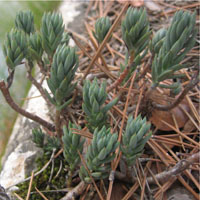 |  |
| Galantamine, or in its organic form, red spider lily, is used to treat Alzheimer’s and other memory impairments. An alkaloid, Galantamine is believed to increase the concentration of acetylcholine—a neurotransmitter that plays a very active role in dreaming—in the brain. Galantamine is also used to promote lucid or vivid dreaming. Galantamine is short acting. To use it to work with REM dreams, plan to take your Galantamine five hours after you go to sleep, when the longer periods of REM sleep begin. Set an alarm just before you go to bed, and leave the capsules by your bed. To use it to work with hypnagogia, take it 20 minutes before you go to bed. Start with 4 mg and see what effect that has. Galantamine can be purchased at some supplement stores, or online. | Wild Red Asparagus root is used widely in East Asian cultures for oneiric purposes. Known as the flying herb, this root has been used in Siberian and Chinese shamanic rituals to achieve flight. Taoists also use the root to fly, and to promote flight in martial arts practice. Unsurprisingly, dreams associated with wild asparagus often involve flying. The root is difficult to find, but if you locate a good source, simply eat a piece of the root before bed. You can also find this root made into tinctures. | Silene Capensis is a flowering herb that grows in the Eastern Cape of South Africa. The native Xhosa people traditionally use it for oneiromancy, a form of divination based on dreams. The Xhosa believe that Silene Capensis facilitates communication with the ancestors, who provide guidance or prophecy. They call the root "Undela Ziimhlophe”: "white paths" or white ways." The color white often appears in silene capensis dreams. Traditionally, the root is powdered and consumed as a foam. Place 1 - 2 grams (quarter to half a teaspoon) of ground root into a cup and add approximately a 1/3 cup water. Then take a wooden spoon between your palms and twirl vigorously in the liquid to produce foam. Alternately, use a whisk or a fork to make the foam. Eat the foam and repeat until you feel full, then go to bed. Alternately, mix half a teaspoon into water and drink on an empty stomach several hours before bed. |
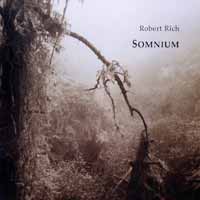 | 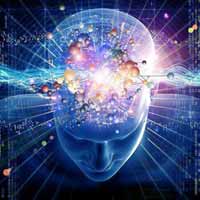 | 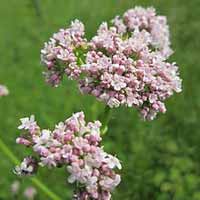 |
| Somnium is a 7 1/2 hour long musical soundscape to be played during sleep. During the 1980s, electronic musician Robert Rich performed a series of live, all-night concerts for sleeping Bay Area audiences. To maximize dreaming, he composed pieces that alternate sound textures to match the phases of sleep. The key of the pieces was to keep the mind as close to consciousness as possible, without waking it out of the dream. During deep sleep, when the mind dives far below the surface of consciousness, the soundscape of Somnium becomes more active. During dream-rich REM sleep, when brainwaves vibrate at the same rate as they do in an alert waking mind, the music becomes quieter and more peaceful. Interestingly, this particular oneirogen sometimes brings participants into each other’s dreams. People also tend to dream of the place in which they’re sleeping. Working with Somnium, remote participants have often felt that they met the main group in the dream world. You can buy Somnium here. | Although they’ve been around since the 1970s, Binaural Beats are currently undergoing a resurgence of interest thanks to the proliferation of Binaural phone apps. Binaural beats work by entraining brain waves. When two different frequencies enter the head through the right and left ears, the brain synthesizes the difference between them. If you hear one tone at 100Hz and another at 110Hz, the brain will recreate these tones in the brain at 105Hz, with a wave that rises and falls at a rate of 10Hz. That supposedly creates a 10Hz beat in your head. Using this method, binaural beats are used to create a brainwave pattern that simulates or triggers a brain state; in this example, 10Hz is an alpha state - relaxed but alert awareness. Similarly, binaural beats can be used to simulate or trigger dream states, like hypnagogia or REM. Some apps claim to be useful in inducing lucid dreaming by simulating Theta, which increases the chances of relaxing quickly as you fall asleep and holding onto conscious awareness. | Valerian Root, from the root and rhizome of a flowering perennial. Described by Hippocrates, it has been used for insomnia since at least the time of ancient Greece and Rome, as well as to treat nervous conditions. Studies conducted in the UK in 2001 showed that valerian root significantly improved stress induced insomnia, but as a side effect greatly increased the vividness of dreams. This study concluded that valerian root affects REM due to natural chemicals and essential oils that stimulate serotonin and opioid receptors. Valerian root aids in dream recall, and is used to bring on lucid dreams. If you’re prone to bad dreams, you should avoid valerian, unless you’re actively exploring this mind state. Brew valerian root into a tea by steeping two to three grams (a really heaping tablespoon) in a cup of very hot (not boiling) water for 15 minutes then drinking it right before bed. Pregnant women should not take this herb. |
 |  | 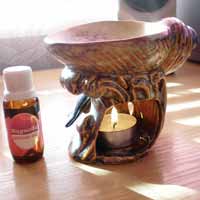 |
| Liminal Dream Practices: Hypnagogia Hypnagogia happens during the transitional period when you first fall asleep at night, as well as when you go down for a nap. During this state, your brainwaves slow from alpha, which is associated with the relaxed human waking state, to the theta waves that characterize stage two sleep. It’s one of the best phases of sleep for dreams (You’ll recognize it as that period of time when you’re drifting off and start to have floaty, sometimes uncanny trance-like mind states.) Creative thinkers, like Edison, Dali, and Kekulé, have tapped hypnagogia for creativity and problem solving. When you hear about great inventions or discoveries that come from dreams, they’re often hypnagogic dreams. I’ve compiled a lot of Liminal Dream exercises (at LiminalDreaming.com) that help people learn to navigate hypnagogia. One easy one is to try to stay awake enough to become aware of the moment you fall asleep. Practicing that will keep you in hypnagogia longer. Less narrative and more free-associative than most REM dreams, hypnagogic visions reflect a particularly unusual state of mind, as we pass from one world to another one. | Guayusa is a holly tree native to the Amazon. One of the few holly trees to contain caffeine, Guayusa is also used as a stimulant. Indigenous people of the Amazon, such as the Achuar from southeastern Ecuador, traditionally wake before sunrise to drink guayusa together and interpret dreams from the night before. As an oneirogen, Guayusa both promotes vivid dreams and also aids in dream recollection. Some use it to induce lucid dreams. Tea is made from the dried leaves. Pour very hot water over two grams (a level tablespoon) of Guayusa and steep for 5 – 10 minutes. Drink in the morning for dream sharing. Drink at night to promote vivid dreams, but be sure to counteract the stimulant properties with something that helps you sleep, such as the scent of lavender. | Olfactory oneirogens, scents that promote vivid dreams, are extremely effective and are a wonderful alternative for people interested in exploring oneirogens but hesitant to ingest something, such as pregnant women or people who are extremely sensitive to herbs of any sort. Effective olfactory oneirogens include: Mugwort: Produces complex, vivid dreams Rose: Counteracts bad dreams, produces pleasant, sweet dreams Lavender: Promotes sleep, counteracts insomnia. During sleep, your body releases chemicals that paralyze you, to keep you from acting out your dreams. However, sense of smell and hearing remain intact because there’s no risk to your sleeping self. Olfactory oneirogens can be placed into sachets. For a stronger experience, try adding essential oils. You can also just fill the end of a sock, or make a small pillow. Sleep with the oneirogen on your bedside table near you in bed. |
